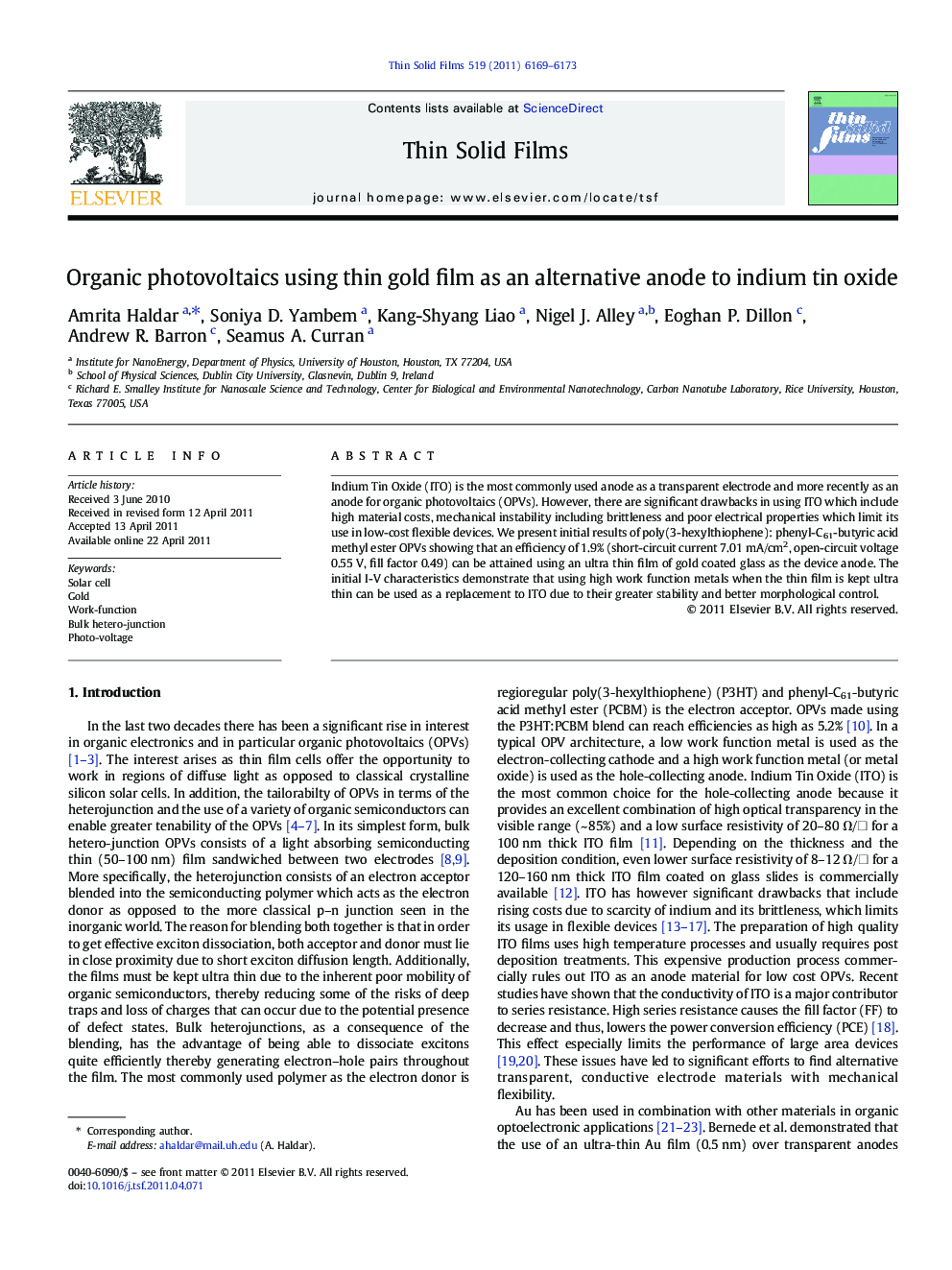| Article ID | Journal | Published Year | Pages | File Type |
|---|---|---|---|---|
| 1668599 | Thin Solid Films | 2011 | 5 Pages |
Indium Tin Oxide (ITO) is the most commonly used anode as a transparent electrode and more recently as an anode for organic photovoltaics (OPVs). However, there are significant drawbacks in using ITO which include high material costs, mechanical instability including brittleness and poor electrical properties which limit its use in low-cost flexible devices. We present initial results of poly(3-hexylthiophene): phenyl-C61-butyric acid methyl ester OPVs showing that an efficiency of 1.9% (short-circuit current 7.01 mA/cm2, open-circuit voltage 0.55 V, fill factor 0.49) can be attained using an ultra thin film of gold coated glass as the device anode. The initial I-V characteristics demonstrate that using high work function metals when the thin film is kept ultra thin can be used as a replacement to ITO due to their greater stability and better morphological control.
